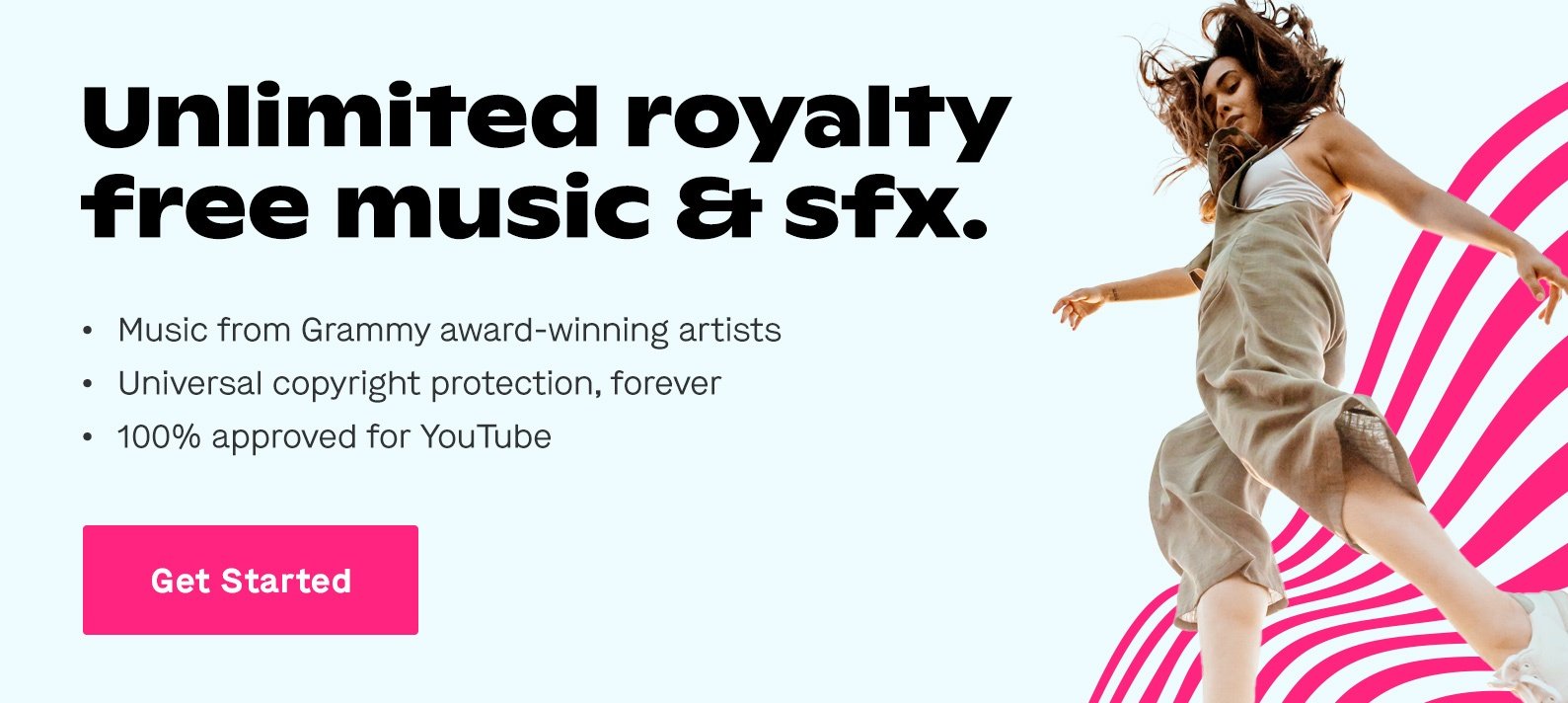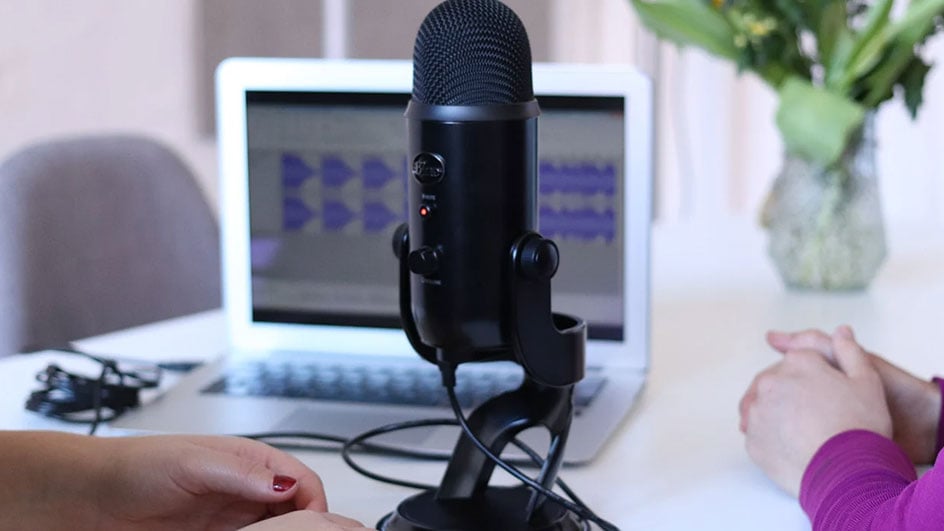
Jan 9, 2020
Everyone needs the right tools to do the job — podcasters included.
Most people think that means a solid microphone, good podcast music, and a cool recording area and lights if you’re doing a video podcast.
And to a large extent, it does. Without a great microphone and headphones, you’re going to struggle to produce a quality show and get more podcast listeners.
But you also need the right podcasting software, so you can record crystal clear audio, edit your content until the sound is just right, and host the finished episodes so the world can hear them.
As you probably guessed, this article lists some of the best podcast software. There are a lot of options, so I’ve divided the categories into editing and recording, hosting, and digital audio workstations.
Editing and Recording Software
Welcome to the bread and butter of podcast production. If you’re creating a show, you’re going to need editing and recording software. However, the exact features you need may vary, which is why I’ve put this lovely list together just for you:
Podcastle
Cost: Free
Despite being fairly new in the list Podcastle has grown into a full-fledged podcast creation platform that is just right for those looking to make quality content with ease.
This software covers the content creation process from beginning to end. You can record high quality video and audio both on the web application and your iPhone, you can host remote interviews with up to 9 guests, and edit your content into a publication-ready show with ease.
Some of Podcastle’s handiest features are the AI-powered noise and silence removers, the automatic audio transcriber, the royalty-free music and sound effect library and the intuitive interface that makes the platform suitable for anyone regardless of their experience.
Another quite special tool offered is Revoice which allows you to create a digital copy of your voice and generate episode intros, outros or any content for your show that sounds just like you. And if you’d like to try something else you can use one of their many natural-sounding voice skins — Podcastle always has options to pick from.
Audacity
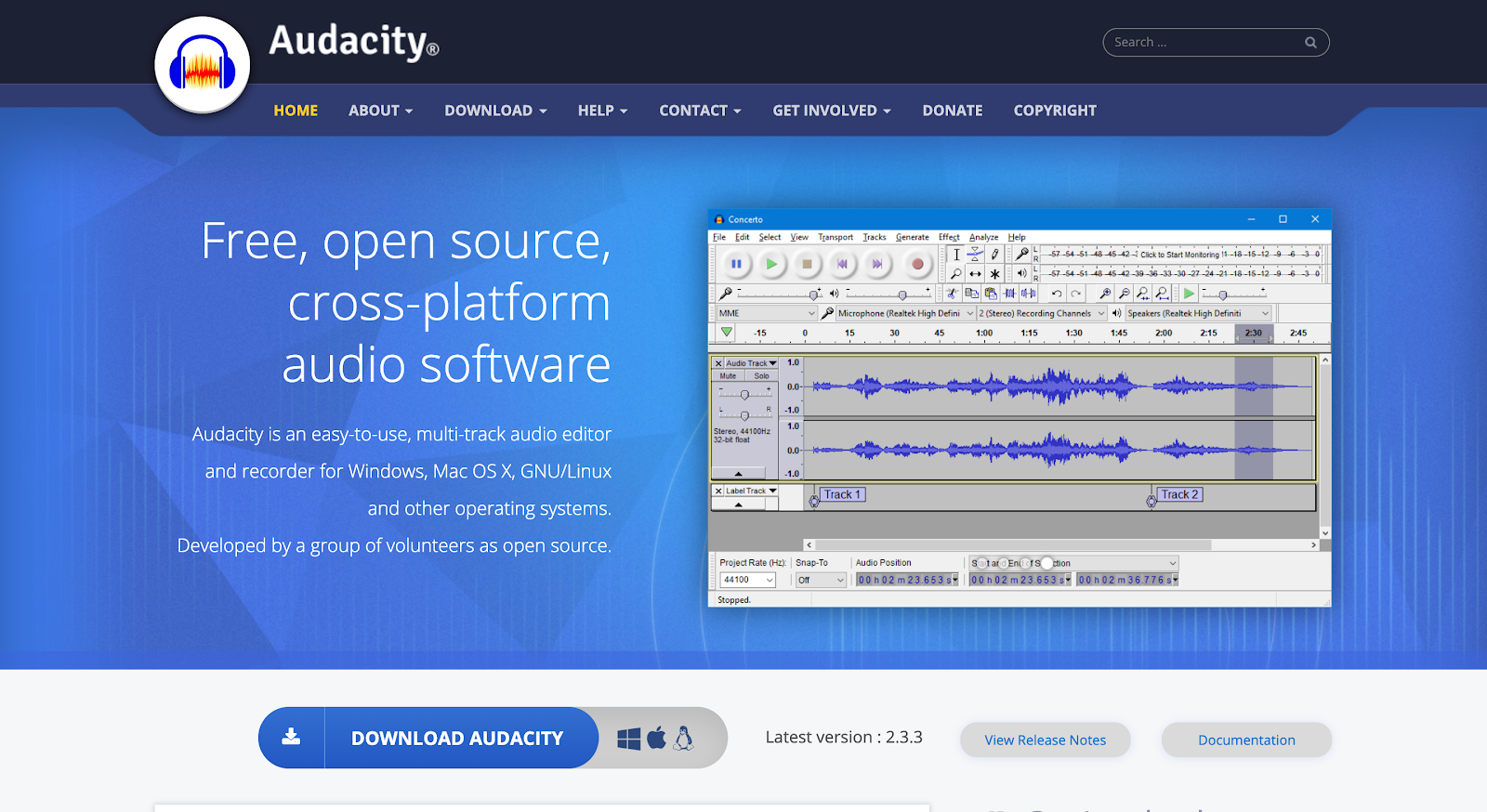
Cost: Free
Audacity has been around since 2000, when its creators developed the software at Carnegie Mellon University. That sounds ancient in technology terms, but look past its age, and you’ll find that Audacity has aged pretty well.
This audio editor is totally free and open-source, so it’s a particularly good option if you want to record a podcast without spending any money on software.
Beyond being free, Audacity can do pretty much what any other podcasting software can. But as you might expect from a 20-year-old free piece of technology, the interface isn’t anything to write home about.
Plus, you have to download the application directly to your computer, so if want to record from a browser, you’ll have to look elsewhere.
Even with these minor drawbacks, Audacity has plenty of features to get the job done, like savable EQ, fading, import and export options, and saving chains of effects.
Hindenburg Journalist
Cost: $95
Hindenburg Journalist brands itself as podcasting software for storytellers. If you want to spend most of your attention on the content of your podcast rather than minutia of audio engineering, this might be the option for you.
When you add audio to Hindenburg Journalist, it automatically sets the levels for you. That goes for music, sound and audio effects, and voice recordings. It even EQ’s your voice track to give your voice that perfect pitch.
There’s also a clipboard function, a la Microsoft Word, where you cut segments of audio and save them on a vertical sidebar until you want them again.
Garageband
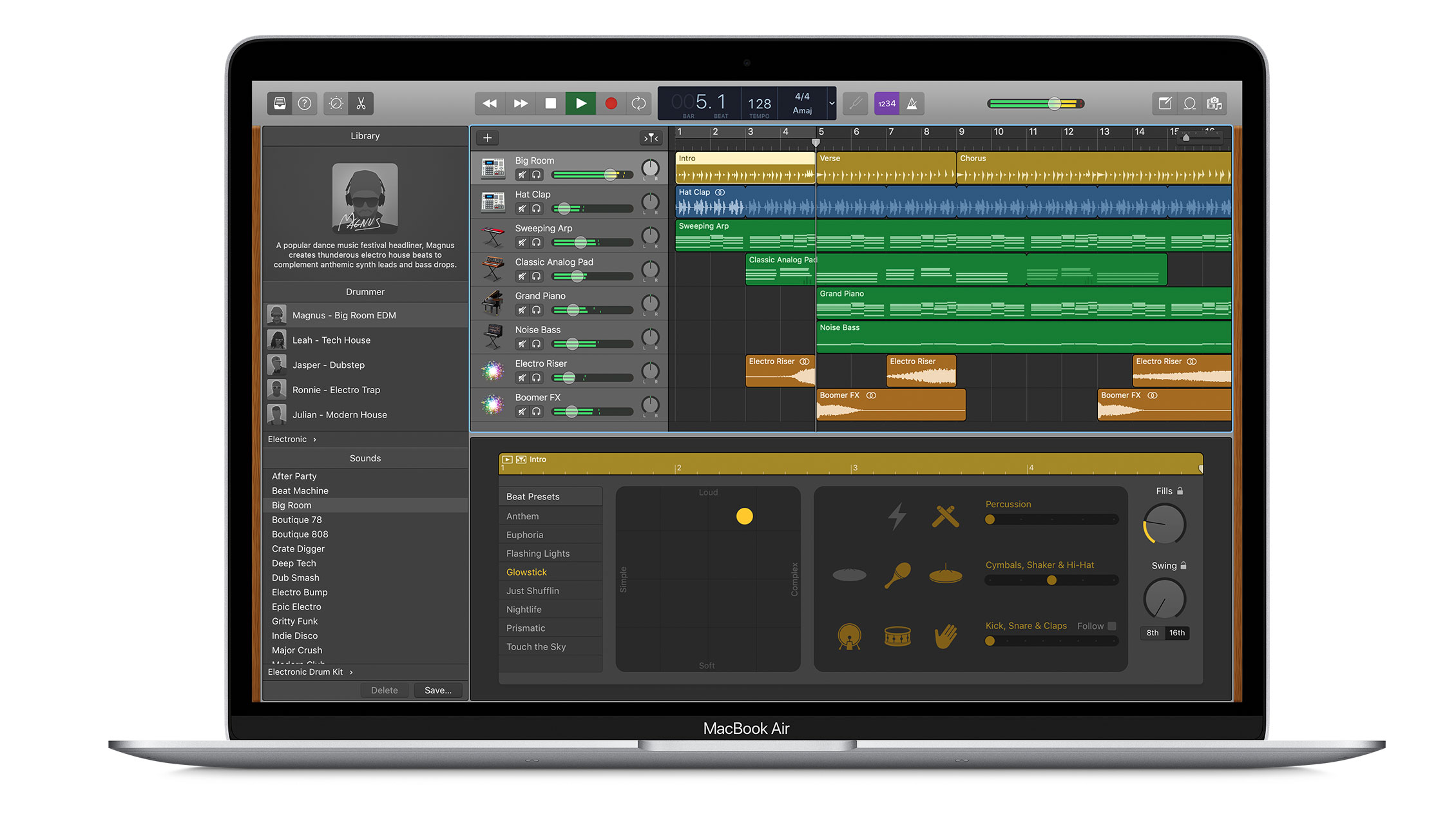
Cost: FREE
Garageband first hit the stage in 2005, so like Audacity, this software has been around for awhile.
However, Audacity isn’t owned by Apple. Garageband is. That means significant resources have been poured into refining the user experience and ensuring everyone from novices to experts can use this application with relative ease.
Not only is Garageband easy to use, it’s also pretty powerful. You can record solo or interview-style podcasts, then mix in separate tracks for intro music, outro music, and ads.
Since Garageband was originally designed to record music rather than podcasts, there may be some slight adjustments you need to make. Still, this is a great, free choice if you’ve got a Mac.
Ringr
Cost: $7.99 / month
If you need to make sure your interviews are crystal clear, Ringr has you covered.
Ringr’s goal is to make podcast conversations sound like they’re happening in the same room. To focus on audio quality, Ringr only does recordings, so you’ll need to trust another tool for editing and publishing.
Ringr gives you two ways to record: from your desktop or from your mobile device.
Setting up a recording session and inviting guests is pretty simple. Just enter your guest’s email address, add a short message, and Ringr will email them a link to join the podcast.
Once the session is done, you can download the files in a variety of formats, like mono, stereo, and studio (which has separate tracks).
Alitu
Cost: $28 / month
The headline on Alitu’s site is “The Quick & Easy Way to Make Your Podcast.” They are true to their word.
The entire platform is designed for ease of use, so creating an episode in Alitu is really just navigating a series of slick interfaces, uploading files, and then hitting publish.
Here’s the big draw with this podcasting software: if you upload different segments of audio, Alitu combines different them into a finished podcast.
To build your podcast, you just upload your intro, outro, advertisements, and main segments into different sections on a timeline. Then hit export, and Alitu reformats them into a finished podcast, which you can automatically upload to a podcast hosting service, like Simplecast or Buzzsprout.
Nearly all of the technical sound processes are automated for you. So you just record your podcast and structure the timeline.
Hosting Software
After you record and edit your podcast, you can’t just publish it directly to iTunes. Just like you have to pay a web hosting company to house a website, you also have to pay someone to host the audio files for your podcast.
Once you’re set up with a podcast hosting service, they’ll publish your show to all of the major networks. Depending on whom you choose, you may also get access to analytics that reveal how often and how long people listen to your podcast.
Here are a few of the best options:
Buzzsprout
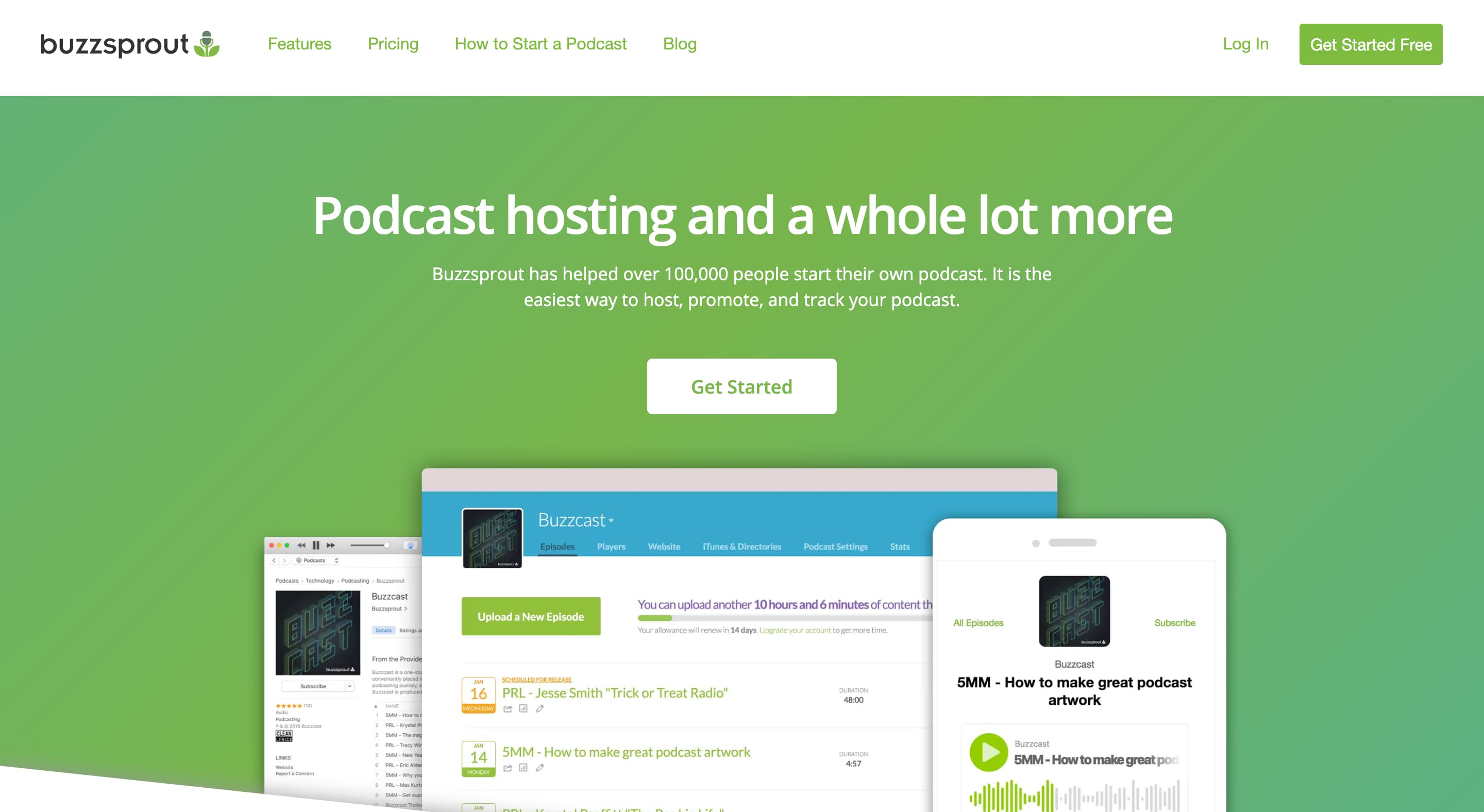
Cost: Free for 90 days or $12 a month
Whenever you’re choosing a product or service, it’s a good rule of thumb to look at how long a brand’s been around. Case in point: Buzzsprout has offered podcast hosting since 2009, which makes it an elder statesman in the industry.
Beyond hosting, Buzzsprout offers a variety of useful features. You can embed a podcast player directly on your website, which is really useful if you’re already blogging with an established audience.
You also get an analytics dashboard that shows you where people listen to your show and for how long. Buzzsprout is also exceptionally easy to use, so if you need to upload content in batches (rather than one show at a time) you can do so in minutes.
Buzzsprout offers a free version of their platform, which is nice, but it only hosts your files for 90 days.
Transistor
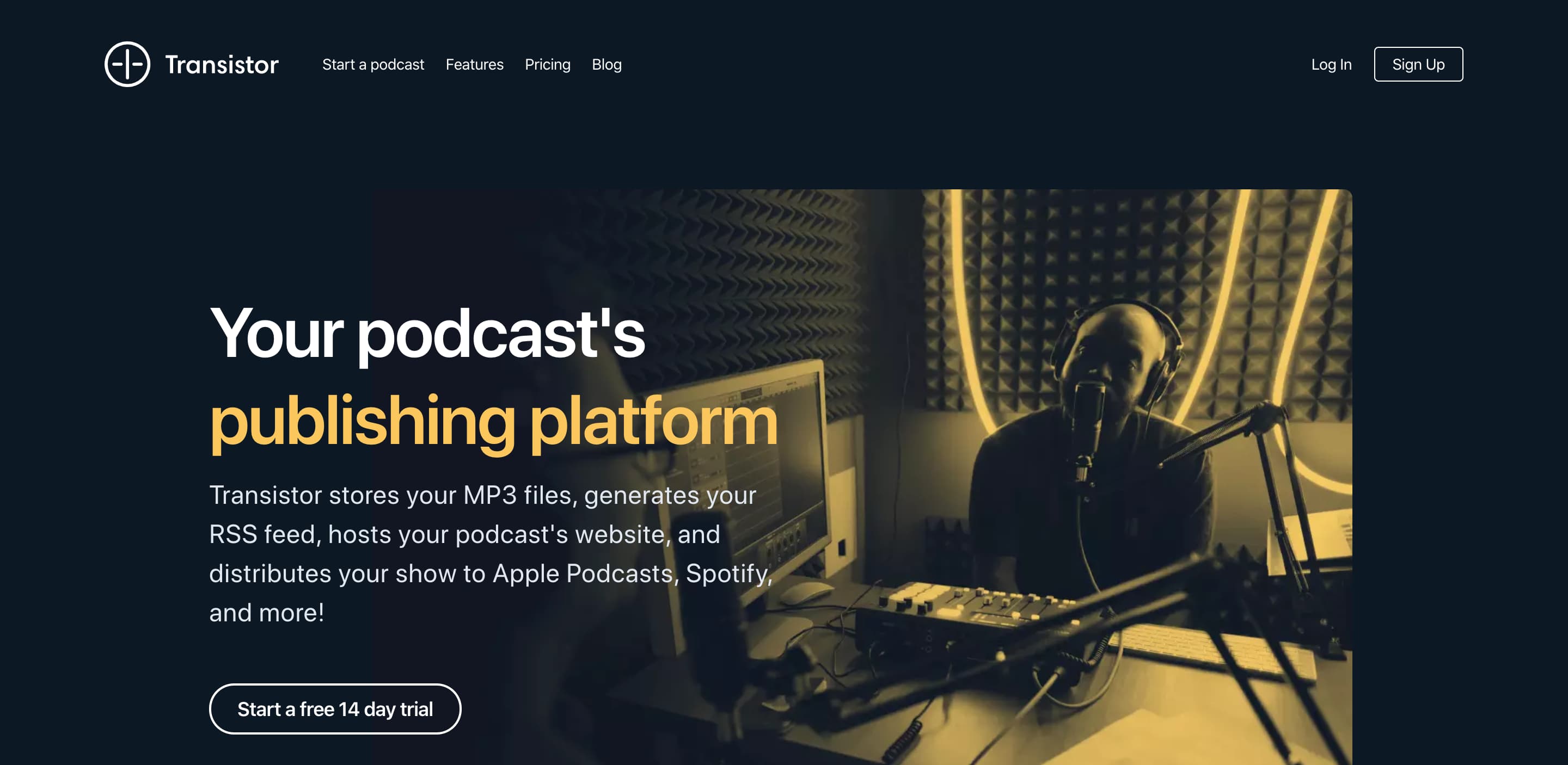
Cost: $19 a month
Do you know anyone who runs multiple podcasts? Are you that perhaps that person? If so, you should take a look at Transistor.
These guys let you host multiple shows on a single account. In the long run, that can add up to a decent amount of savings, and a lot of saved effort.
In similar fashion, Transistor also lets you invite multiple users to a single account. So if you’ve got a team of collaborators working on your shows, you can all work together from the same central account.
Another cool perk is Transistor’s out-of-the-box podcast websites. The software will automatically generate a website for each of your podcasts, which gives you some nice content to share on social.
Like most podcast hosting services, Transistor also offers listener analytics.
Simplecast
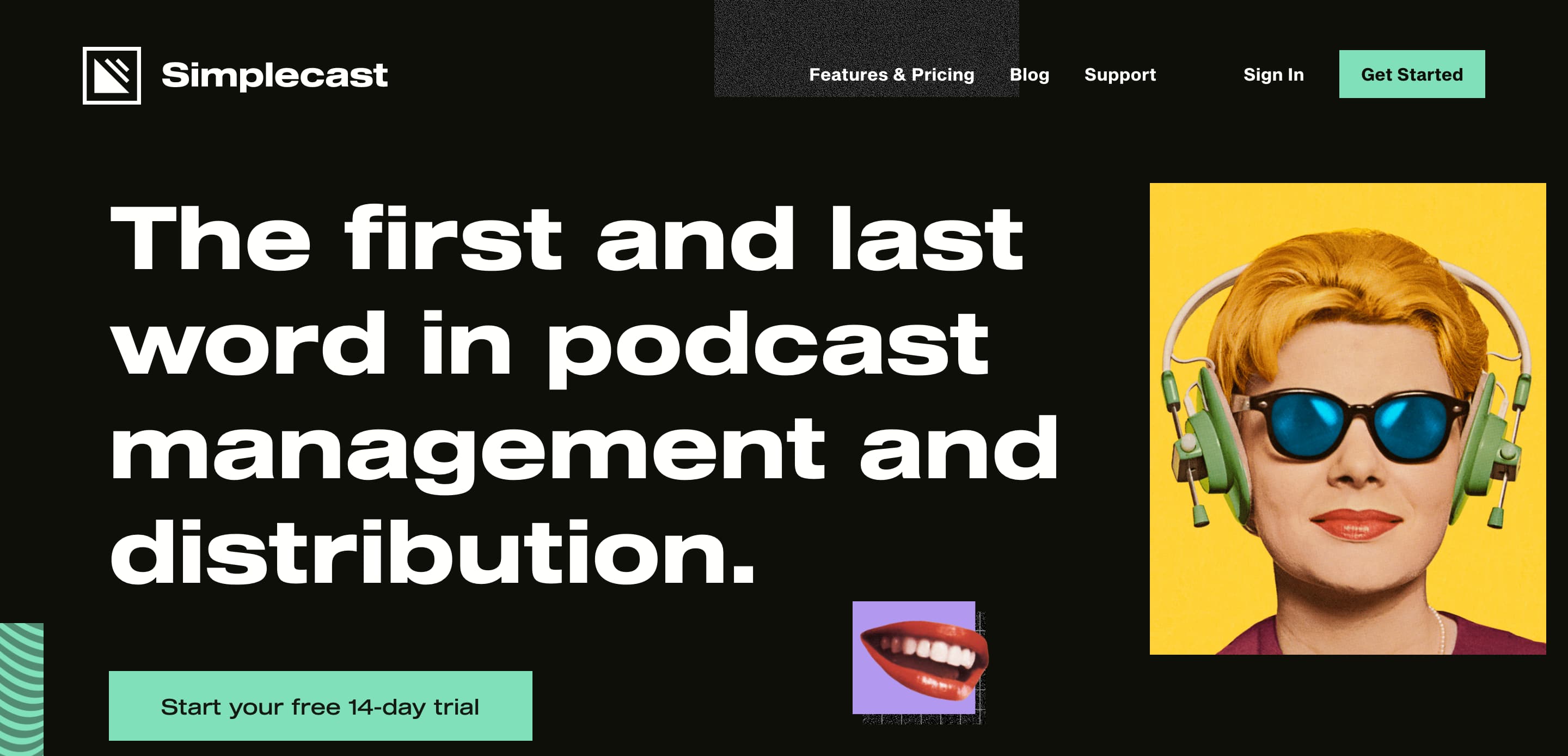
Cost: $15 a month
After you’ve already spent hours recording and editing your podcast, the last thing you want is another complicated process of uploading and distributing the content. Good thing Simplecast was designed to be easy.
From publishing to analytics, this software was designed to make your podcast life less stressful. Simplecast’s one-click publishing is a great example.
If you’re into marketing your show — and everyone should be, really — you’ll love the Recast tool. This feature lets you create trailers for your show that you can share directly to Instagram, Twitter, and whatever other social platforms you’re spending time on.
All-In-One Podcast Software
If you don’t want to bother with three different pieces of podcasting software, then these next options were made for you. Record, edit, host, and distribute your episodes all from one place.
Cast
Cost: $10 per month
Cast contains three main sections: a recorder, an editor, and a publisher. With that information alone, you know this software has got you covered from start to finish.
Cast also makes it really easy to record and edit your podcast directly from your browser. Most of the other options on this list require you to download software directly to your computer and record from there.
But with Cast, you can record a show of up to three hours and with up to four guests — all from your browser.
It’s also super easy to invite people to record. Cast generates a link, and your guest(s) just click that link to jump in.
Cast also offers podcast hosting services, so you can publish your shows directly to their platform once everything is ready.
Anchor
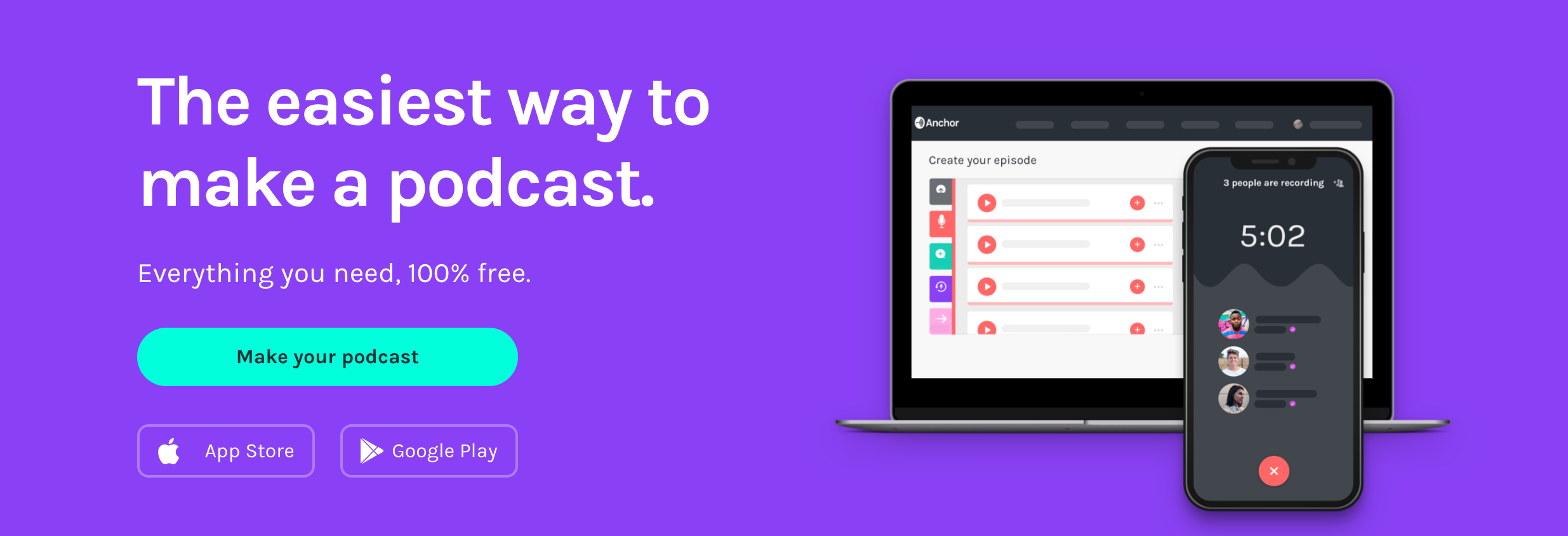
Cost: FREE
Anchor is basically the Captain America of podcasting software: it does it all. You can record, edit, host, and distribute your podcast from within Anchor’s platform.
Like Alitu, the interface is remarkably user friendly. Expect lots of white space and colorful buttons.
Anchor is an entire podcasting platform, not just a product, so you have to create a profile to upload or record a podcast. During the process you can set up your podcast description, choose where to syndicate it, and even create album art from a library of stock photos.
Anchor also has several unique features that add a lot of value for podcasters. For example, the messages functionality allows audience members to leave you voice messages, which you can then use in your show.
There’s also an analytics dashboard that shows how many listens and downloads your podcast is raking in.
Given the wealth of features you get with Anchor, you might be surprised to learn that it’s free. That’s right: it’s available at absolutely no cost.
Digital Audio Workstations (DAWs)
I’ll be honest with you: you’ll probably only need a DAW if you’re doing some pretty complex sound design for your show (think Radiolab).
These pieces of software are made for audio professionals in the music business, which means they come with a steep learning curve. And hey, maybe that’s alright with you. Maybe you do have some really technical sound work that needs to be done.
If so, here are a couple of really good options:
Adobe Audition
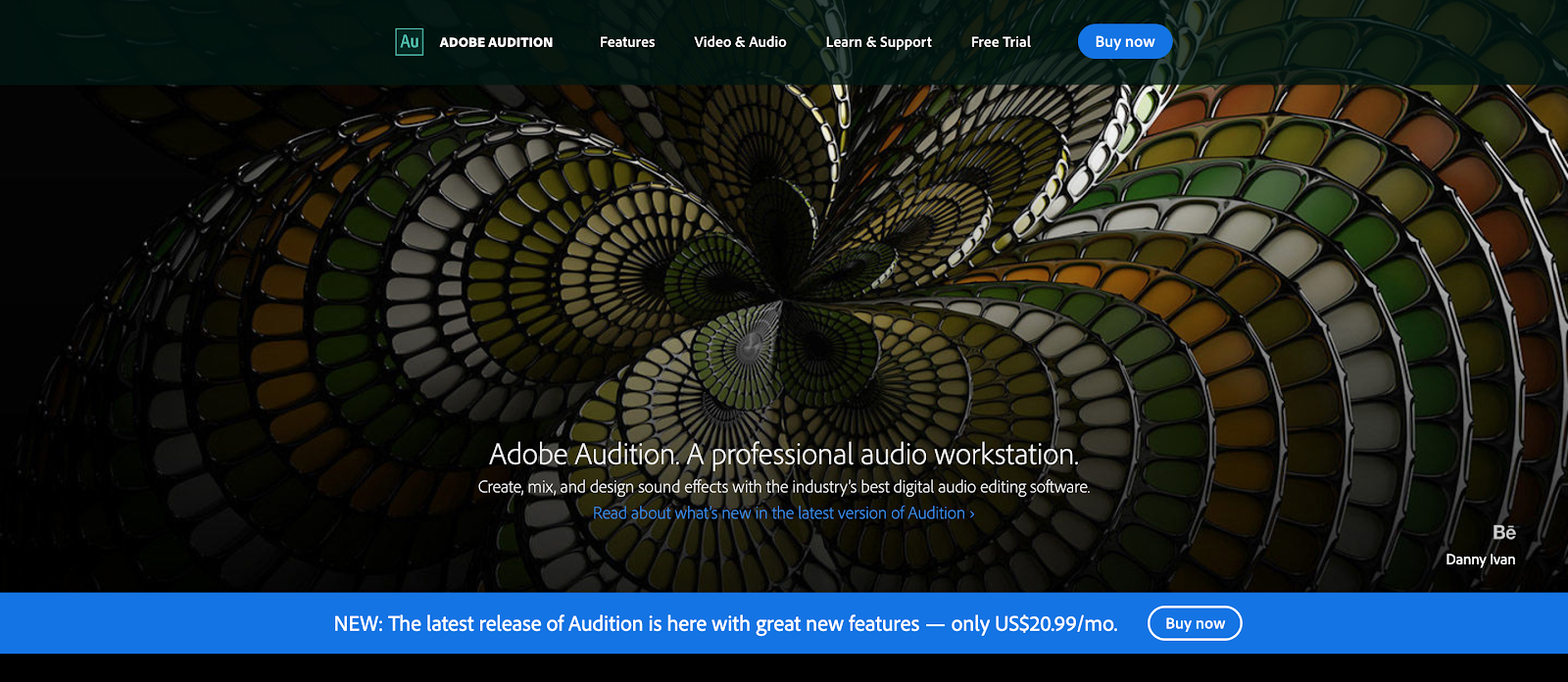
Cost: $20.99 per month
While this list isn’t necessarily about ranking podcasting software, I would be remiss if I didn’t mention that Adobe Audition is one of the best around.
Audition consistently ranks among the top audio editing software for a number of reasons. First and foremost is the software’s impressive multi-track editing capabilities.
You can easily pull, mix, and edit dialogue, sound effects, and music with simple drag and drop functionality. It’s also super easy to record multiple tracks at the same time with two different microphones.
Audition is also really good at things that matter to podcasters, like cutting out extraneous background noise and cleaning up audio quality. If you’re often recording in a cafe or at a conference, then these features will be a godsend.
And since Audition is owned by Adobe, it plays well with all the other software that Adobe owns. If you’re doing any other creative work outside of podcasting, then that’s a huge bonus.
Avid Pro Tools
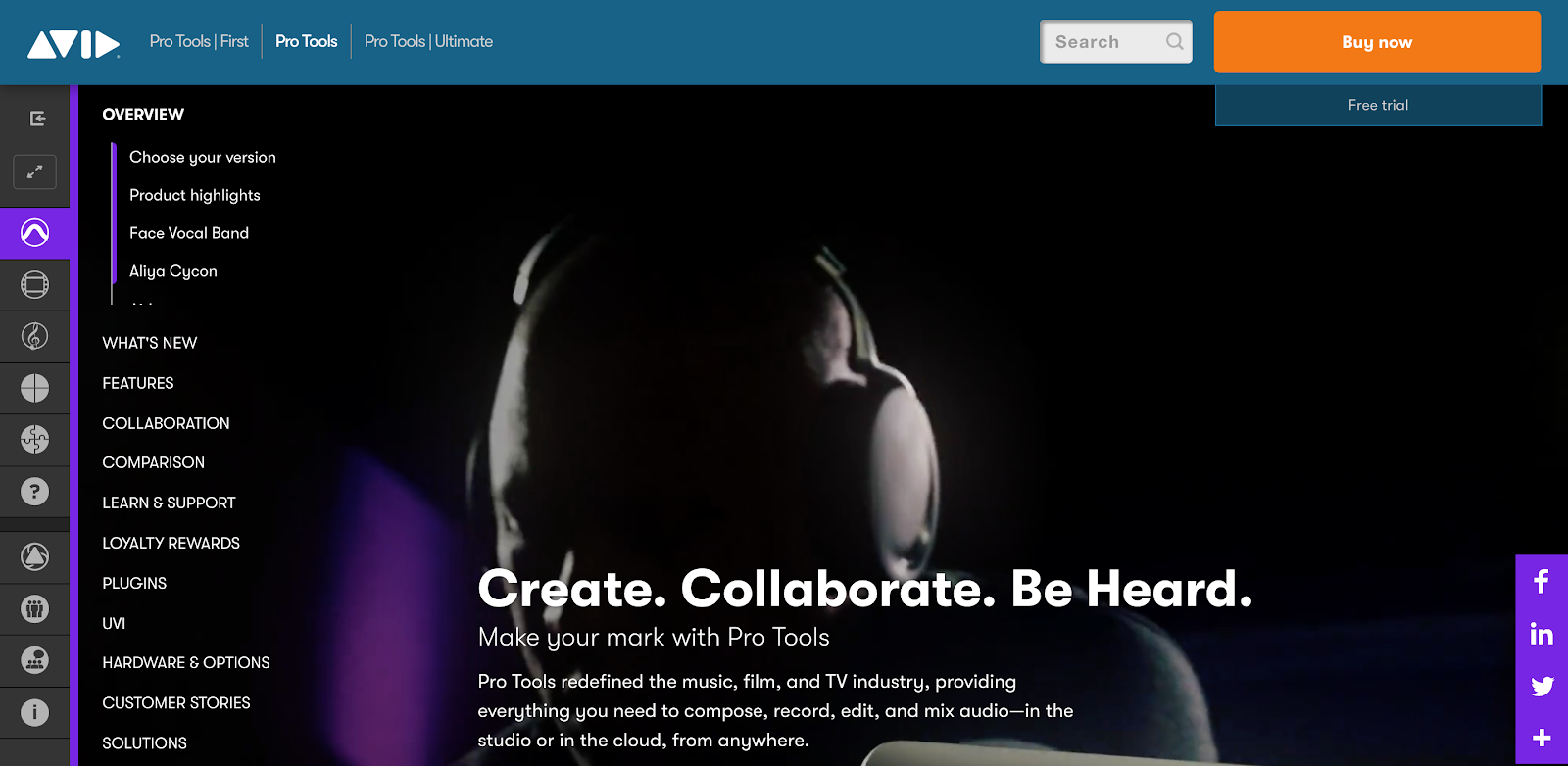
Cost: Free (for a limited version) or $29.99 / month with a 12-month subscription
Rounding out the lineup of DAWs is Avid Pro Tools, another powerful piece of software that’s used by a lot of audio professionals.
Just like Logic X and Audition, Pro Tools is a one stop shop for everything from recording to mixing to editing. If you want to go full music producer and compose music, you can do that too.
Pro Tools shines in a couple of areas. First, there’s Beat Detective, the excellently-named quantization feature in this software. Pro Tools might be the best software out of the bunch at removing imperfections from raw music. Second is Pro Tools’ exporting functionality, which makes packaging and exporting files a breeze.
There is a learning curve to this software. None of the heavyweight DAWs are dead simple per se, but Pro Tools has slightly more idiosyncrasies that can make it just a bit harder to navigate.
***
So that’s that. A big list of podcasting software — from complex, heavyweight digital audio workstations to recording-only apps to entire podcasting platforms.
Which is right for you? Well, that’s for you to decide.
